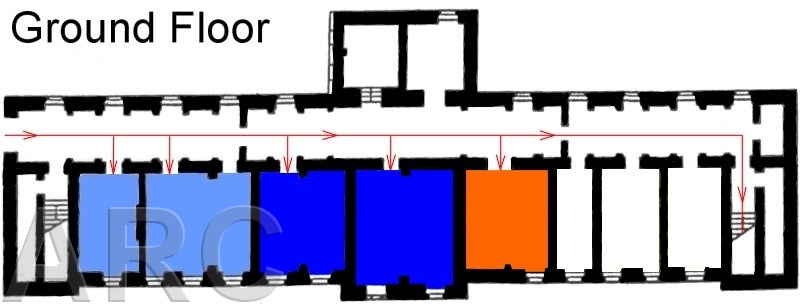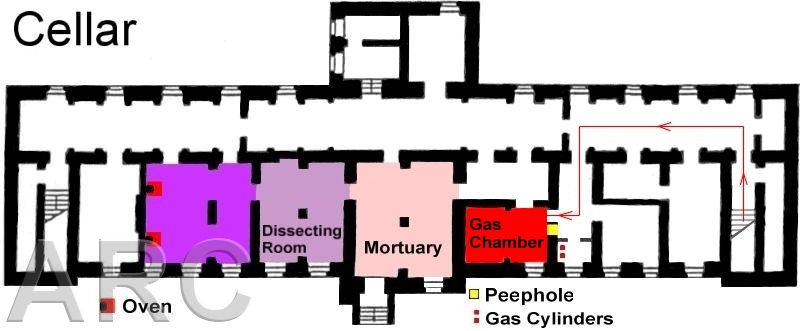who became the first victims.
(Intermediate Home). In Bernburg
the extermination procedure was the same as in other euthanasia killing centres:
In Bernburg too the incoming victims were killed
at once. Big grey buses entered the wooden garage. Then the
victims were allowed to leave the bus. Through a corridor they came
to the ground floor. In several rooms they were examined etc.
Victims having physically special features, were marked
with a red cross on their back, by the doctors. In groups of 60-75
they were ordered downstairs to the cellar, accompanied by
"nurses". After gassing, the two gas chamber doors remained closed
for one hour, until the room was ventilated. Next to the gas
chamber was the dissection room. After gassing the marked victims
were sorted out and the doctors performed an autopsy on their
corpses. The others were cremated immediately by the "burners".
During the
Sonderbehandlung 14f13 (Special Treatment / in
Bernburg
from 1941 until April 1943) about 5,000 persons were
killed in Bernburg, mainly Jews from the concentration camps
Buchenwald, Flossenbürg, Groß-Rosen, Neuengamme,
Ravensbrück and
Sachsenhausen. The buildings, not leased to
T4, continued to operate as regular mental institution during the whole period!
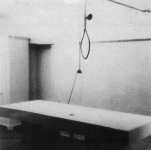 |
| Dissecting Table in 1945 |
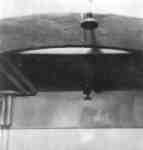 |
| Sprinkler in 1945 |
Because of an order from the
WVHA from
27 April 1943
at least the cremation ovens were dismantled,
the T4 personnel transferred to Poland (see
Aktion Reinhard).
In
1949 the nurse
Anna Maria L.
(
Ludwigsburg archive files La - Le) still
saw in the cellar some benches on which the victims waited for "having a shower",
the sprinklers in the gas chamber and the dissecting table.
In course of the construction works for the memorial (
1988/89) the peephole
in the gas chamber wall and the gas chamber door came to light.
In
January 1948 the former director Dr
Irmfried Eberl was
arrested. He evaded trial by committing suicide in
February 1948.
Some other persons of the Bernburg staff were sentenced after
1948,
but most of them have never been brought to justice.
A number of
Aktion Reinhard personnel served at Bernburg,
these include
Rudolf Bär, Johannes Bauch, Max Biala, Helmut
Bootz, Werner Borowski, Werner Dubois, Kurt D., Irmfried Eberl,
Erwin Fichtner, Herbert Floss, Karl Frenzel, Erich Fuchs, Albert
G., Siegfried Graetschus, August Hengst, Gottlieb Hering, Fritz
Hirche, Erwin Lambert, Willy Mätzig, Johann Niemann, Josef
Oberhauser, Karl Pötzinger, Wenzel Rehwald, Gottfried Schwarz,
Fritz Schmidt, Otto Stadie, Franz Stangl and Christian Wirth.
In
September 1989, the
Bernburg Memorial was inaugurated.
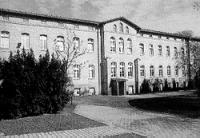
|
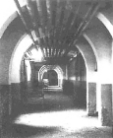 |
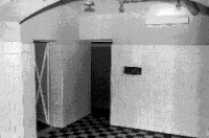 |
| Männerhaus 2 |
Cellar |
Gas chamber 1996 |
Photos: By courtesy of Dr. U. Hoffmann, Bernburg Memorial
© ARC 2005












